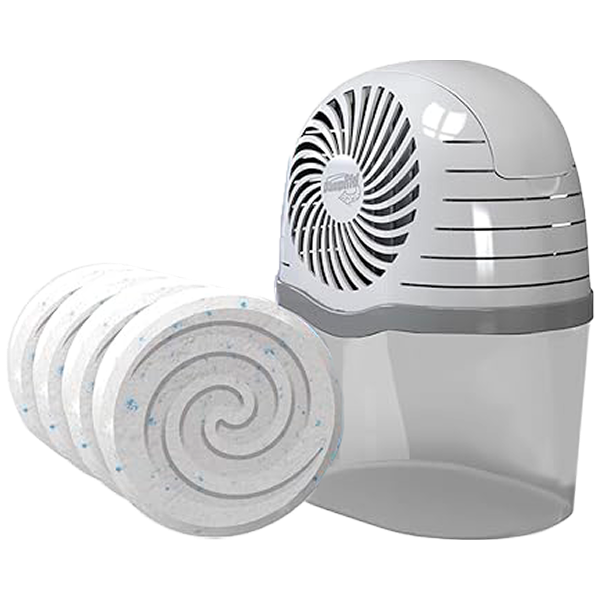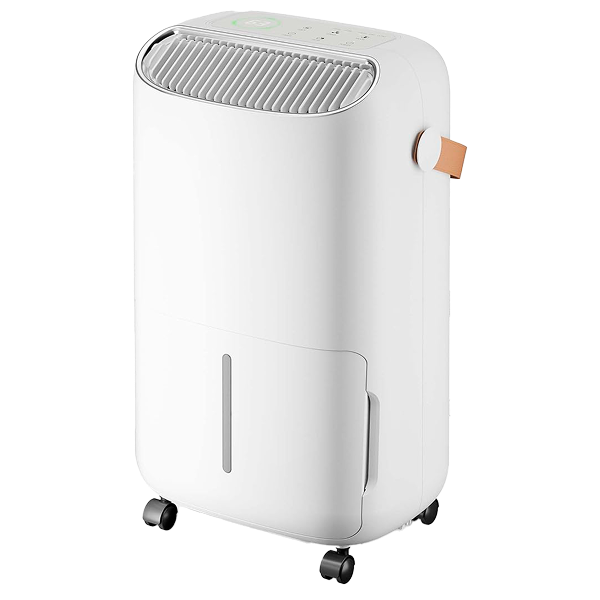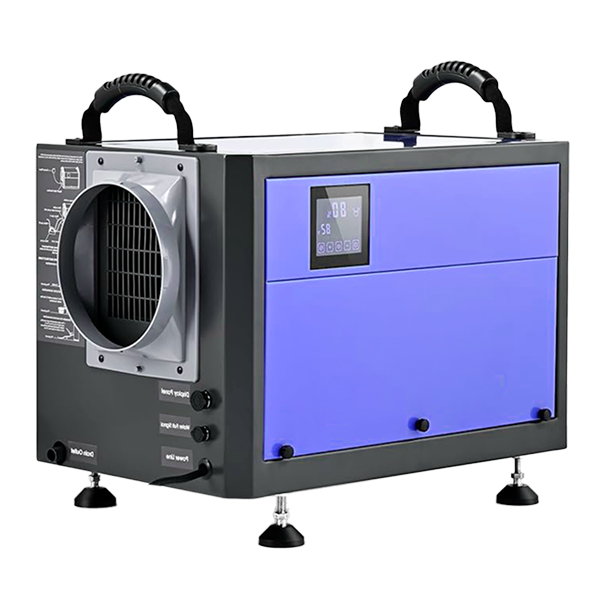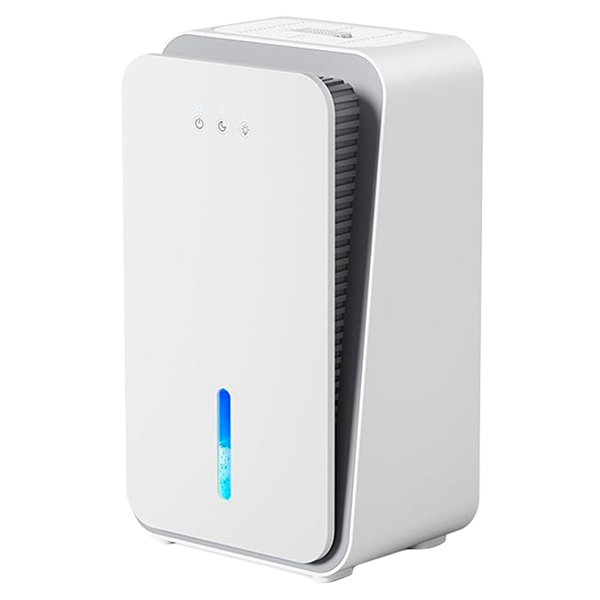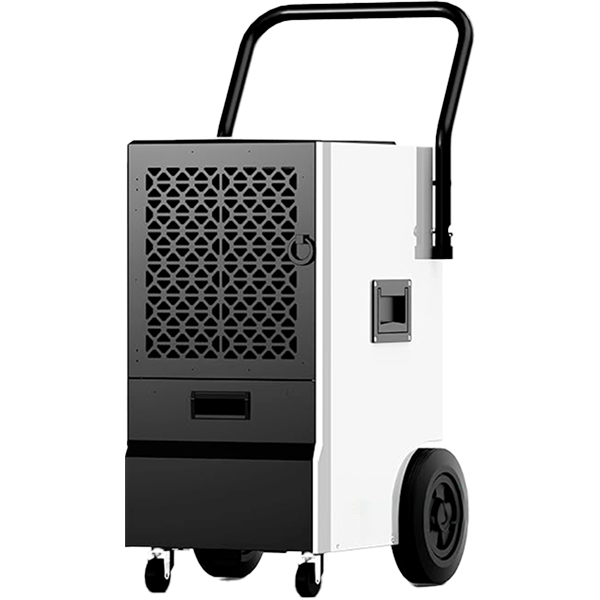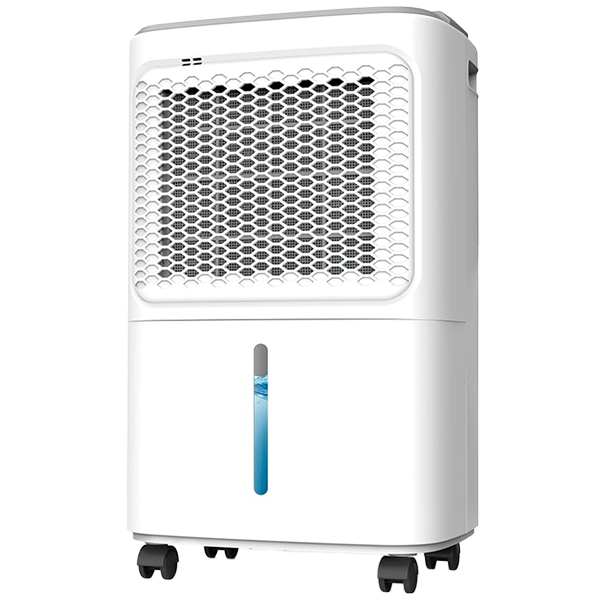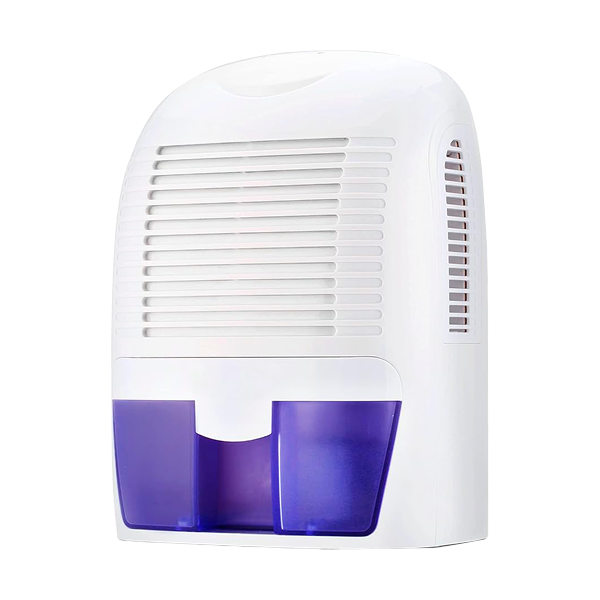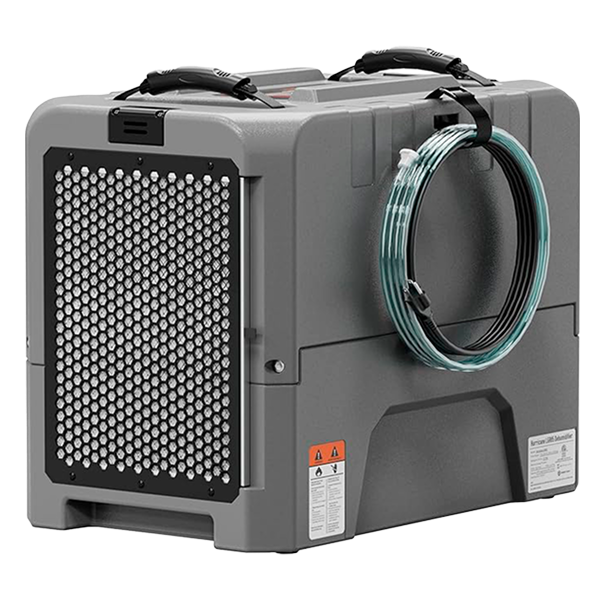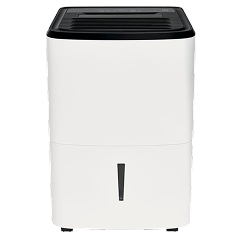Maintaining a balanced indoor humidity level is essential for a healthy and comfortable home. Too much moisture in the air can lead to condensation on windows, musty smells, mold growth, and even structural damage to your home. On the other hand, too little moisture can dry out your skin and respiratory system.
The ideal indoor humidity level falls between 40% and 60%. Within this range, homes are less hospitable to dust mites, bacteria, and mold. Furniture, walls, and electronics also benefit from being kept in a stable humidity environment.
A dehumidifier plays a crucial role in achieving this balance. Whether you’re dealing with a damp basement, a poorly ventilated bathroom, or a laundry room that never seems to dry, this guide will help you choose the best dehumidifier for your needs. We’ve included everything from technical features to real-world tips based on years of user feedback.
Key Features and Specifications
Before diving into different types of dehumidifiers, it’s important to understand the key features and technical specs that determine how well a unit will perform.
Moisture Extraction Rate
This indicates the amount of moisture the device can remove from the air in 24 hours. Smaller units remove 10–12L/day, while larger ones can handle over 20L/day. Choose the right one based on your room size and how damp the space is. For example:
- Small Rooms (up to 15 m²) – Think bedrooms, home offices, or utility rooms. If you occasionally get condensation on windows, live in a house/flat with thin walls or dry a few items of laundry indoors, a 10–12L/day model is usually enough. These units are also good for use in small bathrooms to prevent black mold build-up and peeling paint above the bath or shower.
- Medium Rooms (15–30 m²) – Ideal for living rooms or larger bedrooms with consistent damp patches, stuffy air, or regular laundry drying. Here, aim for a 12–20L/day model. If your windows fog up in the morning or you feel a musty smell when you walk inside, go for the higher end of this range.
- Large or Very Damp Rooms (30 m² and up) – For basements, open-plan kitchens, or homes with poor ventilation where mold, mildew, or dripping walls are an issue. Choose a 20L+ per day dehumidifier – preferably with a continuous drain option, so you’re not emptying it constantly. These dehumidifiers are also very efficient at helping to air-dry laundry indoors, especially if your room gets a bit cold and you don’t want to put the heating on. Look for a laundry mode, which tends to be more energy-efficient than using a tumble dryer.
Tank Capacity
The water collected from the air is stored in a built-in tank. A larger tank means fewer trips to empty it, but also takes up more space. Some models offer continuous drainage to eliminate manual emptying – this works by attaching a hose to the unit and letting the water drip non-stop into a sink, floor drain or a larger tank.
Humidistat
This feature lets you set a target humidity level. Once the level is reached, the dehumidifier will turn off automatically and restart only when the humidity rises again, conserving energy and preventing over-drying.
Auto Defrost
Essential for refrigerant models in colder climates. When internal coils freeze, this feature temporarily shuts down the compressor to allow thawing and resume efficient operation.
Coverage Area
Always check if the model you’re considering is powerful enough for your intended room size. Small models may only cover 15–20m², while others can cover 50m² or more. Consider whether your space is open-plan and if the dehumidifier will be powerful enough to get into hidden spots and crannies.
Noise Levels & Noise Preference
Dehumidifiers aren’t silent, and you should always expect them to make some noise, just like you would with a dishwasher or a fan. However, some are quieter than others. Look for decibel ratings – below 40dB is ideal for bedrooms, home offices and nurseries. Anything above 55dB is considered noisy, so we’d only suggest using these in less frequented rooms or when you leave the house. Use a comparison chart if you want to get an idea of how loud the dehumidifier is.
Desiccant and Peltier models tend to be quieter than compressor models as they don’t require a compressor to run. Some models offer a night or sleep mode, usually meaning the fan runs at low speed, and therefore, this setting is quieter.
Here’s a useful overview:
- <30 dB – Ideal for bedrooms or nurseries.This is a very quiet operation – on par with a whisper or light rustling leaves. Dehumidifiers at this level are rare but ideal for night-time use, baby rooms, or anyone sensitive to noise during sleep.
- 30–50 dB – Suitable for living areas or home offices. Similar to a quiet conversation or a gentle fan. Most modern residential dehumidifiers fall into this range. They’re generally well tolerated in common areas like living rooms, kitchens, and studies, especially during daytime hours.
- >50 dB – Best for basements, garages, or utility rooms. This level of noise is comparable to a dishwasher or a busy street. It’s typical for larger, high-performance dehumidifiers designed for heavy moisture removal. Best used in spaces where noise isn’t a concern, like basements, laundry rooms, or home gyms (or if you’re planning to only run it when you’re not at home).
Continuous Drainage Option
A continuous drainage hose is useful if you want to set and forget your dehumidifier. These hoses can be connected to the unit externally and come in various lengths. Switching to a drainage hose means you can run the dehumidifier non-stop with the water flowing into a drain or until your large collection tank is full. This makes them ideal for basements or laundry rooms.
Auto Shut-Off
Auto shut-off prevents overflowing by automatically shutting off when the tank is full. Most modern units have this feature, and some even have a warning sign or a flashing light in the water tank to inform you it’s time to empty, but always double-check before purchase.
Filter Type
Some dehumidifiers come with HEPA or carbon filters to trap dust and odors. Others use washable mesh filters. If you’re concerned about air quality, this is a feature to look for.
-
HEPA Filters
High Efficiency Particulate Air (HEPA) filters capture up to 99.97% of airborne particles like dust, pollen, pet dander, and mold spores. If you suffer from allergies or want to improve indoor air quality, a HEPA filter is a top choice.
-
Activated Carbon Filters
These filters are designed to neutralise odors and trap gases, smoke, and volatile organic compounds (VOCs). They’re ideal for households with pets, smokers, or strong cooking smells.
-
Plastic or Mesh Filters
Often washable and reusable, mesh or plastic filters trap larger particles like dust and hair before air enters the dehumidifier. They’re low maintenance but don’t filter fine particles or odors.
-
Antibacterial or Antimicrobial Filters
These filters are treated with coatings that inhibit the growth of bacteria, mold, and mildew on the filter surface. They’re useful in damp environments where microbes thrive.
-
Ion Filters or Ionisers
Some dehumidifiers include built-in ionisers that release negative ions to help remove airborne particles. While not technically a filter, ionisers can improve air freshness by helping particles stick to surfaces or get trapped in filters more easily.
-
UV-C Light Filters
A small number of high-end models use UV-C light to kill bacteria and viruses in the air as it passes through the unit. Like ionisers, this is more of an air treatment feature than a physical filter, but it’s still part of the air-cleaning system.
-
Pre-Filters
Often combined with other filters, pre-filters trap larger particles like dust, pet hair, and lint to prevent clogging of finer filters like HEPA. These are usually washable and extend the life of the main filter, so they’re highly recommended!
Understanding Dehumidifier Types
Not all dehumidifiers are the same. Understanding the different types and technologies available can help you choose the most effective type for your climate and needs.
Refrigerant (Compressor-Based)
These are the most common. They draw in moist air and pass it over a cold coil to condense the moisture. They work best in warm and humid environments and are generally more energy-efficient than other types.
Desiccant Dehumidifiers
Instead of using refrigerant, these models use a moisture-absorbing material (desiccant) that is heated to release collected moisture. They work well in colder environments and tend to be quieter, but may consume more energy. If you’re concerned about damp in your basement, garage or workshop that doesn’t get heated regularly, a desiccant dehumidifier is the right one for you.
Peltier (Thermoelectric) Units
These compact models use a Peltier module to cool air and condense moisture. They’re ideal for small spaces like dorms, wardrobes, cupboards, or under-sink areas. However, they’re not powerful enough for larger rooms.
Whole-House Systems
These are integrated into your HVAC system and manage humidity throughout your home. They’re efficient, quiet, and low-maintenance, but require professional installation and cost significantly more.
Common Mistakes to Avoid
When shopping for a dehumidifier, it’s easy to get overwhelmed or misled by marketing jargon, seasonal deals and the number of products on the market. Here are the most frequent pitfalls:
Choosing the Wrong Size
Many users underestimate how much power they need. A small unit in a large, damp room will be ineffective and may run continuously without reducing humidity. Always check the size of the rooms you want the dehumidifier to run in before purchase.
Ignoring Noise Levels
Buyers often overlook dB ratings. This becomes a major issue when placing the unit in a bedroom or office. Noise levels are one of the most complained-about features, so if you’re noise-sensitive, require the unit to run often or intend to use it in a nursery or bedroom, don’t overlook this specification.
Overlooking Energy Efficiency
High-capacity units may use more power, but some also have energy-saving modes or better EER ratings. Efficiency matters if you plan to run the unit frequently or overnight.
Neglecting Drainage Needs
If you’re placing your dehumidifier in a hard-to-reach area, such as a basement or utility room, make sure it has continuous drainage to avoid regular tank emptying.
Placing the Unit Incorrectly
Avoid pushing the dehumidifier against a wall, furniture or in a very tight spot. Proper air circulation is key for performance. Keep it at least 20cm away from walls and furniture at all times.
Leading Manufacturers Overview
When it comes to choosing a dehumidifier, brand reputation can be a reliable indicator of performance, customer support, and build quality. Here are some of the top manufacturers and what distinguishes them.
Meaco
Best for: Quiet operation | Energy efficiency
Meaco is a well-respected UK brand known for its low-noise, eco-conscious designs. Their Platinum and Arete ranges regularly top best-buy lists for their balance of performance and value.
Key highlights:
- Extremely quiet – ideal for bedrooms, nurseries, or home offices
- Energy-efficient operation with low running costs
- Features like child lock, digital humidistat, laundry mode and night mode
- Wide model selection to suit everything from flats to large homes
- UK-based customer support and easy access to spare parts
Cons:
- Stock shortages – popular models (like the MeacoDry ABC or Arete One) often sell out, leading to limited availability during peak damp seasons.
Midea
Best for: Feature-rich budget options | Smart connectivity | Everyday value
Midea is one of the world’s largest appliance manufacturers. Their dehumidifiers are modern, well-priced, and often include smart tech not usually found at this price point.
Key highlights:
- Many models offer Wi-Fi/app control and voice assistant support
- Sleek, minimalist designs that fit into modern interiors
- Reliable moisture extraction and good coverage per watt
- Widely available through major retailers
Replacement filters and parts are usually easy to source
Cons:
- Customers in the UK report limited customer support, although a global brand, after-sales service, and parts availability in the UK can be inconsistent.
De’Longhi
Best for: Stylish design | Living areas | Premium finish
Italian brand De’Longhi is known for elegant aesthetics and home comfort appliances. Their dehumidifiers combine form and function, particularly suited for spaces where looks matter.
Key highlights:
- Sleek, modern design – ideal for living rooms or design-conscious homes
- Dual drainage options (tank + continuous hose)
- Anti-bacterial air filters for added air-cleaning benefit
- Quiet operation with gentle airflow
- Limited parts availability – check warranty and support before buying
Cons:
- Noise levels – some models are louder than expected, particularly in high extraction modes, making them less ideal for quiet spaces.
Ebac
Best for: British weather | Auto-sensing tech | Durability
Ebac designs and manufactures its dehumidifiers in the UK, with a strong focus on reliability and climate-specific performance. Their Smart Control tech automatically adjusts operation based on your home’s moisture levels.
Key highlights:
- Tailored to UK humidity patterns and housing styles
- Smart Control adjusts settings automatically for minimal energy use
- Long warranties and sturdy, repairable designs
- Larger models are ideal for basements, utility rooms, and whole-floor use
- Solid post-sale support and spare parts availability
Cons:
- Higher upfront cost – UK-made and focused on quality, but often pricier than competitors with similar specs.
Pro Breeze
Best for: Budget-conscious buyers | Occasional use | Compact spaces
Pro Breeze is a go-to choice for affordable dehumidifiers, particularly for smaller rooms or light damp issues. While not the most advanced, they deliver solid performance for the price.
Key highlights:
- Wide selection: Peltier, compressor, and desiccant models available
- Lightweight and compact – easy to move or store
- Simple controls and plug-and-play operation
- Ideal for flats, cupboards, bedrooms, and caravans
Lower durability in long-term use – best for occasional or backup use
Cons:
- Build quality can feel budget, while affordable, some users report flimsy plastics or durability concerns over long-term use.
Devola
Best for: Mid-range quality | Digital controls | Quiet operation
Devola is gaining popularity for delivering good-value dehumidifiers with reliable specs and sleek finishes. Their units are well-suited to modern UK homes that need quiet, consistent performance.
Key highlights:
- Digital displays, timers, and smart laundry modes
- Compact but powerful – ideal for small to medium-sized homes
- Low-noise models are ideal for living areas and shared spaces
- Stylish, neutral-toned designs to suit most interiors
- Often available at competitive prices with decent warranty coverage
Cons:
- Limited smart features – most models lack app connectivity or advanced scheduling options, which may be a drawback for tech-savvy users.
Matching Dehumidifiers to Room Types
Not every dehumidifier suits every space. Choosing the right model for your room type will ensure better efficiency, comfort, and longevity.
Small Rooms (up to 20m²)
Look for a compact model with a 10–12L/day extraction rate. Quiet operation (under 40dB) is a bonus, especially in bedrooms or home offices. Ensure it includes a humidistat for hands-free control.
Medium Rooms (20–40m²)
A 12–20L/day model is ideal for spaces like lounges or kitchens. Choose a unit with auto-defrost, laundry mode, and a timer function for added versatility.
Large Rooms (40m²+)
Larger spaces benefit from models extracting 20–30L/day. These units should include continuous drainage, smart sensors, and high airflow rates. Ensure it supports extended run times with a large tank (4L or more).
Basements
Select a model with a robust build, powerful extraction rate, and continuous drainage. Auto-restart and defrost functions are essential, as temperatures can drop significantly.
Laundry Rooms
Moisture from drying clothes increases humidity quickly. Look for dehumidifiers with a “Laundry Mode” or turbo setting, as well as directional vents or swing oscillation to enhance drying power.
Whole-House Solutions
Consider a built-in system or a portable unit for each floor. These systems are best for homes with persistent humidity issues. Consult a professional if installing an HVAC-integrated model.
Additional Considerations
Beyond capacity and type, certain bonus features can elevate your experience and improve performance long-term.
Smart Connectivity
Wi-Fi-enabled models allow remote control via smartphone apps. Monitor humidity levels, switch modes, or set timers while away and always come back to a comfortable home. Ideal for second homes or busy households.
Design and Aesthetics
For shared spaces, choose a unit that complements your decor. De’Longhi and Meaco offer modern designs in neutral finishes that blend into minimalist and modern homes. White is the most common colour of dehumidifiers, but if you’re looking for something more stylish, you can find silver, black and colourful units too in all shapes and sizes.
Portability Features
Wheels, carry handles, and lightweight builds make a big difference, especially in multi-story and large homes. Choose ergonomic designs for ease of movement between rooms and storing the unit away when not in use. Small details such as a cable tidy and a special box or bag for accessories might also come in handy.
Operating Temperature Range
If using in cold garages, basements, or conservatories, check the unit’s minimum operating temperature. Desiccant models typically work well down to 1–2°C, while refrigerant models are best above 10–15°C.
Refrigerant Type
Eco-friendly refrigerants like R290 are becoming more common. These are more sustainable than older types like R134a and offer efficient cooling without compromising environmental goals.
Certifications
Look for CE/UKCA markings, Energy Star ratings, and RoHS compliance. These certifications verify safety, energy efficiency, and low environmental impact.
Modes
Many dehumidifiers now include settings like Laundry Mode (for quicker drying), Night Mode (for quiet operation), and Auto Mode (automatically adjusting the settings based on room humidity). Choose one with modes that match your needs and lifestyle.
Oscillation (Fan Mode)
Some models include fans with oscillation. This improves airflow and speeds up humidity control. It’s particularly useful in laundry or drying applications.
Timer
Smaller and cheaper units often don’t come with a built-in timer, or if they do, it’s very limited (1-3 hours). If you need to turn the dehumidifier on/off at desired times when you’re not around, it’s best to choose a model with an advanced timer, such as a 12 or 24-hour timer.
Traffic Light Humidity Sensors
Some dehumidifiers come with a traffic light humidity indicator, a simple but useful visual feature that shows current humidity levels at a glance. These sensors use coloured lights – typically green, amber, and red – to indicate whether the humidity is ideal, slightly high, or too high.
- Green = Ideal humidity (usually between 40–60%)
- Amber = Moderate humidity (may feel stuffy or damp)
- Red = High humidity (risk of mold, condensation, or musty smells)
This feature is especially helpful if you don’t have a separate hygrometer, or if you want to monitor conditions without checking a digital display. It’s also a great tool for families or older adults, as it gives an instant, easy-to-read signal of whether the dehumidifier needs to be adjusted or run for longer.
Living with Children and Pets
If you have young children or pets at home, safety should be a priority when choosing a dehumidifier. Look for models with a child lock feature to prevent curious fingers from changing settings or turning the unit off. Some units also have tip-over protection, which shuts the machine down automatically if it’s accidentally knocked over – useful in homes with active pets or toddlers.
Pay attention to cable management, too. Long, exposed cords can be a trip hazard or tempting chew toy, so choose a model with a built-in cord tidy or wall plug storage. Units with cool-to-touch exteriors are also worth considering, especially if they’ll be used in living rooms or bedrooms where children or animals might brush up against them.
Lastly, place the unit somewhere secure and stable, ideally out of reach or behind a safety barrier.
Seasonal Use Tips
Humidity levels change with the seasons, so it’s worth adjusting how and when you use your dehumidifier throughout the year.
Transeasonal months
In spring and autumn, humidity often rises due to fluctuating outdoor temperatures and less ventilation. Even if your home doesn’t feel particularly damp, these seasons are prime time for hidden moisture to build up, especially in older properties or rooms that aren’t used daily. Running your dehumidifier during these transitional months can prevent mold growth before it starts.
Summer
In summer, warm air can hold more moisture, which leads to that sticky, musty feeling, particularly in well-insulated homes with limited airflow. A dehumidifier helps maintain comfort levels, prevents condensation in cooler areas (like basements), and protects stored items or electronics.
Winter
Winter is often the worst season for dampness. Cold walls, steamy showers, and indoor drying racks all contribute to condensation on windows and mold along walls and ceilings. Use your dehumidifier regularly, especially in bedrooms, bathrooms, and utility spaces. Models with auto-defrost are essential in colder climates to ensure smooth operation.
For best results year-round, keep an eye on indoor humidity with a hygrometer or use a dehumidifier with a built-in humidistat to maintain optimal levels between 40–60%.
Why Energy Efficiency Matters
Dehumidifiers can quietly add to your electricity bill, especially if they run for several hours a day. That’s why it’s worth investing in an energy-efficient model that balances performance with low power consumption.
Let’s break it down:
A standard dehumidifier rated at 300 watts running 8 hours per day will use about 2.4 kWh per day. At the average U.S. electricity rate of $0.16 per kWh, that works out to roughly:
- $0.38 per day
- $11.40 per month (based on 30 days)
- $137 per year
Larger units or those running 24/7 can easily double or triple that cost. To minimise energy use and save money over time, here’s what to look for:
- Energy Star Certification: These models meet strict efficiency standards and can use up to 30% less energy than non-certified units.
- Built-In Humidistat: Automatically shuts the unit off when your desired humidity is reached – no wasted power.
- Auto Mode or Eco Setting: Reduces fan/compressor speed in mild conditions to lower energy use.
- Timed Operation: Run only during high-humidity hours (e.g., mornings or after showers) to cut down unnecessary runtime.
- High EER (Energy Efficiency Ratio): A better EER means more moisture removal per watt.
- R290 Refrigerant: A more efficient, eco-friendly alternative to older refrigerants that also improves overall energy performance.
Real-World Use Cases
Let’s explore practical examples to help match products with everyday needs.
City Apartment with Poor Ventilation
A desiccant model with quiet operation and a compact footprint is ideal. Prioritise portability and laundry mode for fast drying.
Family Home with Kids
Smart models with timers, child locks, and large capacity (15–20L) are best. Place a unit in the laundry room and one in the basement.
Converted Loft with Roof Condensation
Select a high-efficiency unit with auto-defrost, good cold-weather performance, and a quiet fan. Set it on a timer during high-condensation times.
Holiday Home
Use a Wi-Fi-enabled model that allows for remote monitoring. Look for auto-restart and tank overflow protection for safety and peace of mind.
Comparison Tips for Buyers
With so many models on the market, it’s easy to feel overwhelmed. Here are some expert tips to help you compare models effectively and avoid common decision-making traps.
Prioritise Based on Your Environment
Start with the size of your space and the severity of humidity. A small bedroom with light condensation has very different needs from a basement with constant damp. Consider whether the unit is primarily for comfort, structural protection, or health-related concerns.
Think Long-Term, Not Just Price
It’s tempting to pick the cheapest model, but performance and efficiency matter more over time. A higher-end unit may last longer, use less energy, and come with better support. Cheap models also often lack essential features like humidistats or continuous drainage.
Don’t Skip the Reviews
User reviews often reveal real-world quirks that spec sheets don’t. Look for comments about noise levels, drainage efficiency, or build quality. Pay particular attention to long-term reviews – what seems perfect after a week may have issues after a few months.
Check for Bundled Features
Some models include extras like filters, hoses, or caster wheels. These added features may save you money compared to buying accessories separately. Also consider units that come with washable filters, integrated cord storage, or child locks for added convenience.
Mind the Warranty
A longer warranty often indicates manufacturer confidence. It’s also essential if you’re using the unit in a high-demand setting like a laundry room or basement. Look for brands offering at least a two-year warranty for peace of mind. Customer service reviews also matter – ensure the warranty is easy to redeem.
Consider Seasonal Offers
Major retailers and brands often run summer sales on cooling and humidity-related products. Sign up for newsletters or alerts to catch discounts on high-end models. Buying off-season, especially in autumn or early winter, can sometimes yield better deals.
Compare Energy Consumption
Be sure to look at wattage and EER ratings to understand running costs. A unit that saves a few pounds per month in energy can add up to significant savings annually. Energy-efficient units are also quieter and generate less waste heat.
Don’t Overbuy Features You Won’t Use
If you won’t use smart features or specific modes like Laundry Mode, don’t pay extra for them. Match features to your actual lifestyle to avoid unnecessary cost. However, don’t compromise on essential specs such as coverage area or drainage options.
Ask About Aftercare
Look into how easy it is to find replacement parts, filters, and accessories. Some brands offer subscriptions for filters or include customer support apps that offer maintenance reminders and troubleshooting.
Factor in Installation and Placement
Think about where the unit will live and whether it needs hose access for draining. Measure dimensions carefully if you have tight closet or shelf spaces.
Buying Checklist
Before hitting the checkout button, run through this list:
- What’s the size of your room(s)?
- How damp is the environment — condensation, mold, musty smells?
- Do you need smart features or a remote control?
- Is low noise important for you?
- Will you need to move the unit often?
- Do you want continuous drainage?
- Will it run in cold environments?
- Have you checked for certifications and warranty length?
- Is there reliable support or availability of replacement parts?
Conclusion
Choosing the right dehumidifier is about matching the unit’s features to your space, needs, and lifestyle. Start by assessing your room size and moisture level, then prioritise features like continuous drainage, noise level, and energy efficiency. Don’t overlook filter types if air quality is a concern, and check for smart controls if you want remote access or have/are building a smart home. Brands like Meaco, Ebac, and Midea offer a wide range of options to suit most homes and budgets.
Finally, think long-term: a well-chosen dehumidifier can save you from costly repairs, reduce allergens, and protect furniture and electronics. Use real-world reviews, compare energy ratings, and make sure replacement parts and support are easy to access. By following this guide and using the checklist, you’ll be well-equipped to choose a reliable, efficient unit that keeps your home dry, healthy, and comfortable all year round.


